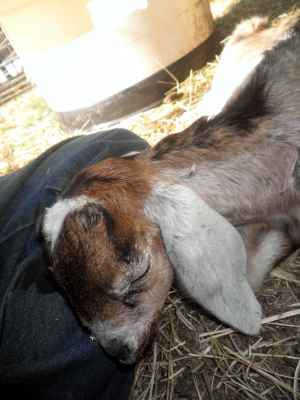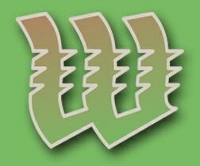The Emotional Reality of Animal Husbandry
Andrew:
The root of the word passion comes from the latin Passio, meaning to endure suffering. When I say that I am passionate about the animals I care for, I mean it with the depth of the word.
 Our senior ewe Dolly (12 years old) and her daughter from this year, Penny. this picture is taken about a month ago. We anticipate this will Dolly's last Winter.
Our senior ewe Dolly (12 years old) and her daughter from this year, Penny. this picture is taken about a month ago. We anticipate this will Dolly's last Winter.
At no other time of year do I feel the depth of passion for these animals like during the fall. It is because the fall is the time for culling the flocks. A time for ending the life of some so that the rest may live and prosper into the future. It is a material and emotional reality that all animals will die, and that stewarding animals entails making the hard decisions of who is to live on.
 This is Penny in the late spring. My how she has grown since then. Penny is one of three daughters that will replace Dolly when she goes.
This is Penny in the late spring. My how she has grown since then. Penny is one of three daughters that will replace Dolly when she goes.
It is a reality as well, that an animal's death is ultimately outside of our control. The struggle for life is very apparent in the spring time and babies fight to overcome the first hurdles of entering the world. Being born on a cold wet day can spell trouble for a young animal from the get go. In nature, one can expect only around 10 percent of animals to survive the first year of life. And many fewer to thier second year. By saving the life of an animal that would have naturally died, we are taking on quite a responsibility.
There is a saying that "by saving a life, one becomes responsible for that life." By saving a life, we have intervened with the order of things and it becomes a moral imperative to steward that life on its path. This means a lot to me, having saved the lives of many goats and sheep. Some of the lives saved have lived on to be important members of our flock. Pip was a scrawny little bottle-baby who grew up to be a big, healthy sweetheart of a ram. Leo, was saved with his brother after their mother died in childbirth. Leo was a great goat, and served as a sire for one generation of goats.
In the past few years I have taken on a primary role in the physical slaughter of the animals. I use the word slaughter in the technical sense meaning to kill an animal for food. In our case, we are slaughtering for more than just food, as there is a multitude of components of any animal's body that we endeavor to make use of: meat, fat, bone, sinew, horns, skin and fur to name a few.
 This is Badger, son of Alison who died earlier in the year. Badger died shortly after his mother. We tried for several days to transition him onto solid food, but to no avail.
This is Badger, son of Alison who died earlier in the year. Badger died shortly after his mother. We tried for several days to transition him onto solid food, but to no avail.
The act of taking a life so that others may live is among the most intimate acts of living a life close to the land. Killing an animal is inherently a spiritual undertaking, and in the process of becoming technically and emotionally prepared for killing, I have learned many things.
 These are "the boys" in a newly created pen where they are helping to improve the soil for a future garden. Fertilizing is one pratical use of excess males that conventionally would be butchered.
These are "the boys" in a newly created pen where they are helping to improve the soil for a future garden. Fertilizing is one pratical use of excess males that conventionally would be butchered.
I endeavor to take time with each animal in the days leading up to slaughtering. To give them the love and attention they enjoy. For each animal, this time is different, and having given so much of myself in the daily care of each individual, I feel I know them very personally and thus know what they like; some extra food, a scratch behind the ear, or a full body rub down. Every animal is unique. Being in the position I am in, I can give the animals what they most enjoy and in the process get a chance to say good-bye and pay my respects.
As I sit with the animal before I make the final cut, I always wait for the animal to be in a calm space. Often, the act of transporting the animal to the site of killing is stressful. Sometimes a little bit of food helps them calm down. Sometimes they just want your attention to know everything is ok. When the animal shows me it is ready, death can come very softly.
I have come to cultivate a special quality of meditative space which I enter before engaging in the act of killing. I make amends with the wrongs I have done so as not to be distracted in the process. I remember back to the moments I have shared with the given creature. I give thanks and recognition for the great cycle of life and death of which I am a part, and for the opportunity to be so closely entwined with the life and well being of this creature's unique life here on Earth. I pray to be able to give them a swift and painless death, and tend to the tools needed to make this possible; sharpening the knife that will make the definitive cut.
 Oana making a test batch of soap from the rendered fat of a recently butchered goat.
Oana making a test batch of soap from the rendered fat of a recently butchered goat.
Having watched these animals grow up, sometimes nursing them from the brink of death or bottle feeding, spending time with them each day, I know they deserve my very best and most crystalline perceptions at their time of dying.
These measures of preparation and cleansing are my own way of coming to terms with a very basic reality. The past must die in order for the future to live on. My body must be fed, life comes from death and death from life. With this understanding the best thing that I can do is to ensure my body and mind act as one when giving a swift death. And to make the most out of the life that the animal is offering.
